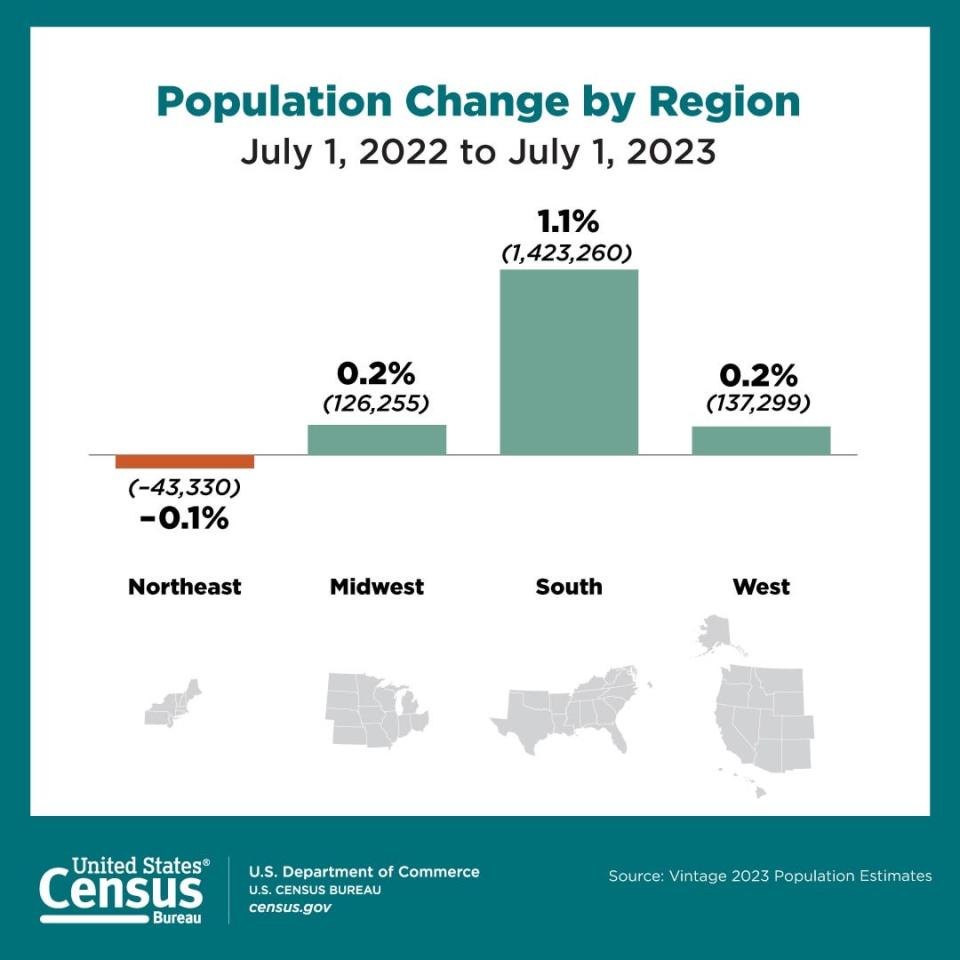New Jersey's population increases, first time since pandemic began
New Jersey’s population is increasing for the first time since the pandemic began in 2020, according to new figures released by the U.S. Census Bureau.
The state’s trend mirrors national data as deaths decrease and migration increases.
New Jersey is one of eleven states that had seen a loss of population in 2022 but a gain in population in 2023. It is joined by Ohio (26,238), Minnesota (23,615), Massachusetts (18,659), Maryland (16,272), Michigan (3,980), Kansas (3,830), Rhode Island (2,120), New Mexico (895), Mississippi (762) and Alaska (130).
U.S. Bureau of Labor Statistics: In 2023, New Jersey saw the highest increase in unemployment rate in the U.S.
New Jersey gained 30,024 new residents in 2023, bringing its population up to 9,290,841 people, according to the new census estimates.
In April 2020 near the beginning of the pandemic, the state had a total population of 9,289,031 people.
Its population dropped by 17,342 people from April 2020 to July 2020. During that same time period the state lost 13,514 people to COVID-19, according to state's data.
New Jersey continued to see a decline in population until this summer. From July 2020 to July 2021, the state saw a decrease of 3,728 people. And from July 2021 to July 2022, the state saw a decrease of 6,262 people.
The state's population reversal can partly be attributed to a decease in the number of pandemic-related deaths. This year, there has been only 885 COVID-19 associated deaths in New Jersey, according to the state's data.

While New Jersey is seeing a return to its pre-pandemic population, the Northeast’s net population has continued to see a decline.
This can be attributed to the state’s two neighbors New York and Pennsylvania, which both saw a population decrease from 2022 to 2023, according to census data.
New York saw a decrease in population of 101,984 people and Pennsylvania saw a decrease in population of 10,408 people.
The other six states that have seen a decrease in population from 2022 to 2023 include California (75,423), Hawaii (4,261), Illinois (32,826), Louisiana (14,274), Oregon (6,021) and West Virginia (3,964).
Real Estate: Nokia Bell Labs dumps 'obsolete' suburban office for gleaming 10-story New Brunswick tower
The Northeast is the only region to continue to see a decline in population. But the U.S. Census Bureau noted that the Northeast has seen “less outmigration to other regions,” in recent years.
The Midwest, South and West have all seen increases in population with 87% of the total U.S. population’s growth happening in the South.
The South has seen both international and domestic migration. Its net international migration increased by almost 500,000 people, while its net domestic migration increased by 706,266 people. The South has also been the only region to see continuous growth throughout the pandemic, according to the U.S. Census Bureau.
The Midwest saw a population increase of 126,255 people, a result of lower outmigration to other states and an increase in international migration. And the West increased by 137,299 people due to international migration. The West did see fewer deaths, according to U.S. Census Bureau, but it also saw a “higher outmigration to other regions.”
Olivia Liu is a reporter covering transportation, Red Bank and western Monmouth County. She can be reached at oliu@gannett.com.
This article originally appeared on Asbury Park Press: New Jersey sees a population increase, the first since pandemic began

